The two lion cubs rescued last month were taken to the Nairobi orphanage on the 1st of June because appropriate facilities to hold them were lacking in Tsavo
The two lion cubs rescued last month were taken to the Nairobi orphanage on the 1st of June because appropriate facilities to hold them were lacking in Tsavo. In particular, the cage at Ndolwa house was substandard and did not meet requirements for holding a lion. 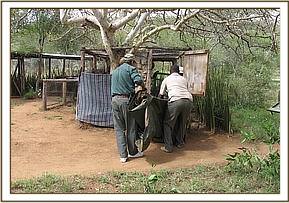

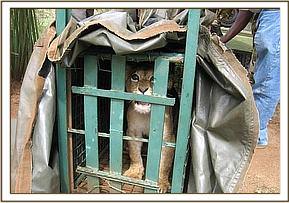

On 1st of June, we received reports from Amboseli about Maasai morans who went on the rampage the previous day and speared an unconfirmed number of elephants. Some reports said that about five elephants were injured. One of the speared elephants was a bull attacked at Oldare area in the park. It had to be shot by KWS rangers because the injuries were too many and serious such that it could not survive. The other affected elephants were from one family. The reason given by the Maasai for this act was that they were angry because an elephant had killed a woman outside the park while fetching firewood.
For three days however, we did not find the affected family despite concerted search efforts by several ground teams and aerial support. The family was thought to have crossed over to Tanzania for it was nowhere in the park and the surrounding dispersal areas and ranch lands. Twelve days after the spearing incident, a female member of the family with an injury on the lower front right leg was seen coming back towards the border from Tanzania. That time however, we had taken a break to attend to some family emergencies. A vet was therefore called from Nairobi to administer treatment, which he did the following day. Thereafter, the elephant moved to Oldare area in the park where it has been up to the time of writing this report. The recovery progress has not been good. It moves very little with lots of difficulties and the injury was discharging pus. A second treatment and assessment was considered necessary and this was done on the 25th
The injury, which was on the right fore carpal joint, was moderately infected and very deep. It is possible that infection may have entered into the joint thus the poor progress. The entire leg was swollen unlike during the first treatment when only the area around the injury was affected.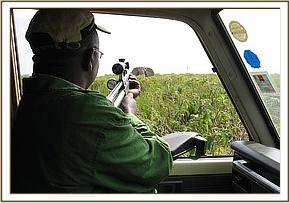


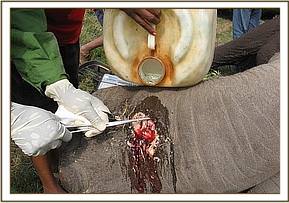

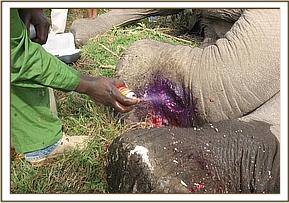

On the 5th of June, we de-snared an Impala near Voi gate in Tsavo East
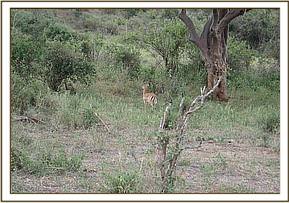

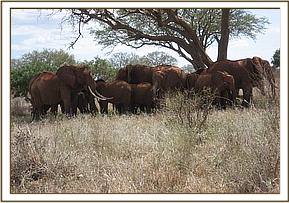

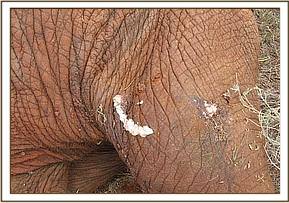
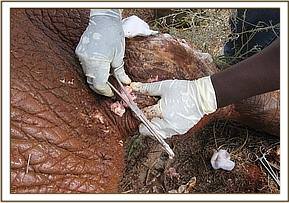
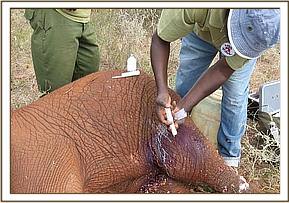

Another elephant case was that of a four-year old at Ndara, which was reported on the 15th while travelling back to Tsavo from from the break reported above. The report said that it was limping heavily on its left fore leg. We searched and found the calf with its mother several kilometres from where it was seen the previous day. The carpal joint was swollen but there was no visible injury. We immobilised the calf to diagnose and treat the problem. The mother became too aggressive when the calf went down and we had to dart it too. 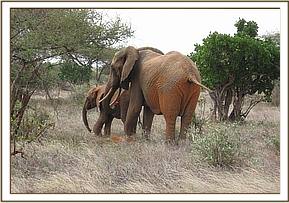

The swelling was very firm and affecting the mobility of the joint. It had no opening and we did not find any contents on aspiration at different sites with a needle and syringe. 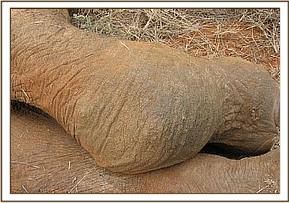

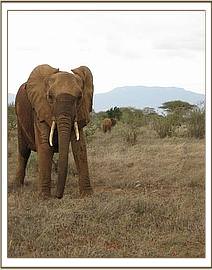

On the June 17th, security rangers on patrol encountered an elephant bull at Dakota area in Tsavo East with what was suspected to be an arrow injury on the left shoulder. The injury was seen discharging pus. The report was conveyed to us the following morning. When we immobilised it however, we found another more serious injury on ventral abdomen which had not been seen. The injury was deep and heavily infected. We could not determine the cause. Both injuries were treated and opened up to facilitate drainage of pus that could form after the treatment.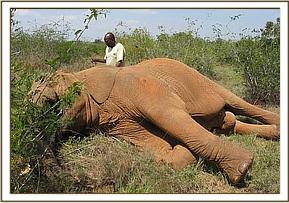
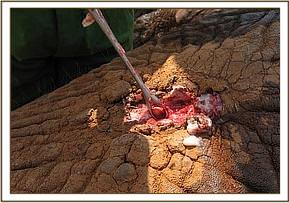
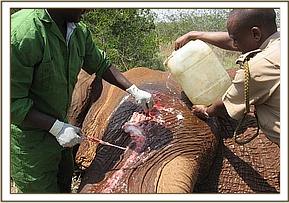

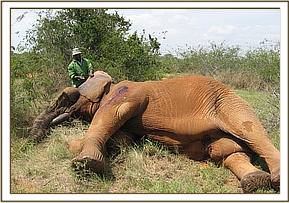

Finally, we recommended that a KWS tracker dog in northern Tsavo East at Ithumba be taken to Nairobi for specialised treatment following recurrence of a tumor of the lower left thoracic wall muscles. 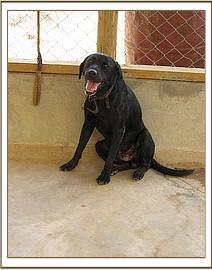

The Mobile Veterinary Unit operated by The David Sheldrick Wildlife Trust working with The Kenyan Wildlife Service and funded by Vier Pfoten.